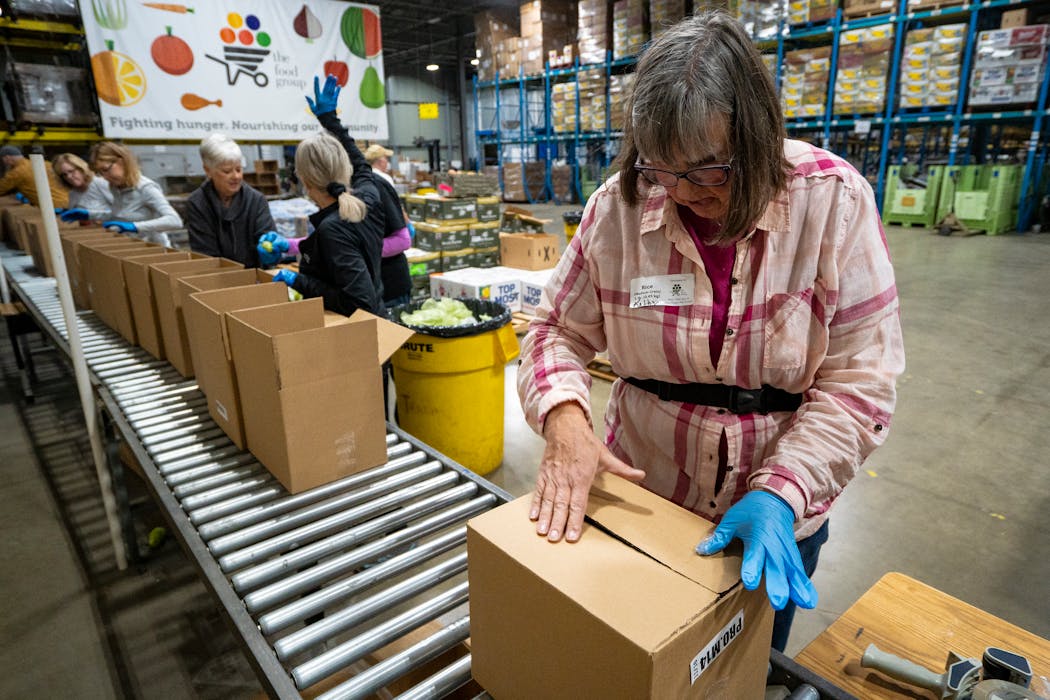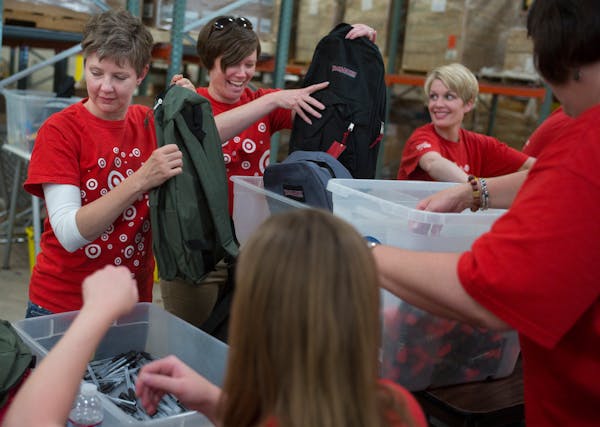Donors bucked national and state trends of declining charitable giving on Thursday, doling out $34.2 million for Give to the Max Day — the second highest amount in 15 years of the event, falling just shy of 2021's record $34.4 million.
For the fourth year in a row, donations for the statewide "giving holiday" topped $30 million for Minnesota schools and nonprofits, continuing to surpass pre-pandemic levels and reinforcing leaders' hopes that Minnesotans would sustain a new level of generosity higher than before the COVID-19 pandemic.
"The pandemic has really shifted digital giving, and Give to the Max Day, to a new floor — and how high the ceiling can go I think is going to be seen over the years," said Jake Blumberg, executive director of GiveMN, which puts on the annual event. "That's exciting to see. You have to combine that with the fact that the cost of doing business for nonprofits and schools have increased as well."
While Give to the Max Day is pegged as a 24-hour fundraiser, it includes all donations made since Nov. 1. About 6,500 nonprofits and schools participated in the online fundraiser, about 40% of the 15,000-plus nonprofits registered in Minnesota.
"It's a great day for Minnesotans as a whole to support causes," said Nate Reed, fundraising manager at Hammer & Northeast Residence (NER), one of the largest disability service providers in Minnesota. "To have a day of giving specific to Minnesota helps elevate philanthropy."
Nonprofits across the U.S. fundraise during Giving Tuesday, held each year on the Tuesday after Thanksgiving (Nov. 28 this year). But in Minnesota, nonprofits also focus on Give to the Max Day, which has emerged as one of the largest grassroots online fundraisers of its kind in the country.
The statewide fundraiser started as a one-time event in 2009, when it collected $14.5 million. But it's grown over time, bringing in $21.6 million in 2019 and exceeding $30 million each year during the COVID-19 pandemic.
"That's a pretty significant amount of growth over the course of a decade and a half," Blumberg said. "This is a statewide Minnesota celebration of generosity that, in its 15th year, is still going strong. That's something Minnesotans can be really proud of."
The boost in giving comes as more nonprofits are struggling financially, and as charitable giving has declined across Minnesota and the nation. .
Individual giving dropped by 6.4% in 2022 across the U.S. and in Minnesota, with state residents donating $5.3 billion last year, falling closer to pre-pandemic levels, according to the Minnesota Council on Foundations.
In a survey released this fall by the Minnesota Council of Nonprofits, a third of respondents reported that donations and foundation grants have declined again this year — the highest number since the statewide association started tracking the data in 2020. As a result, 70% of nearly 200 nonprofits say they've increased fundraising in the last year to meet rising expenses.
Give to the Max Day has bucked the broader downward trends in philanthropy because it's a grassroots campaign driven by smaller donations that people are able to sustain even when the economy wavers, Blumberg said. The average donation is about $100.
Donations on GiveMN's site come with a 6.9% fee, 2% of which goes to GiveMN, a Minneapolis-based nonprofit. The growth of the online fundraiser, as well as a consulting service launched in 2019 to coach nonprofits on fundraising, has helped GiveMN expand from zero employees in 2009 to 14.
In Wayzata and White Bear Lake, Hammer & NER relies on Give to the Max Day to bring in about 10% of its annual revenue. The organizations, which merged earlier this year, serve nearly 380 adults with disabilities in group homes and apartments.
"It's a good kickoff to the year-end fundraising push," Reed said, adding that the organization has seen costs go up for home improvement projects and employee wages.
In north Minneapolis, Give to the Max Day is the largest one-day fundraiser for Juxtaposition Arts, which works with 500 kids and young adults each year.
"Give to the Max Day is so important and so much different than other ways we fundraise," said Nesra Cummings, Juxtaposition Arts' development coordinator.
On Thursday, Juxtaposition Arts held a live graffiti art presentation, adding donors' name to the wall to recognize their contributions and drive excitement about the online fundraiser. Like other nonprofits, Juxtaposition Arts is tapping social media more and planning a cocktail party to draw new donors, especially younger donors; millennial giving surpassed Gen X last year for the first time nationally.
"Give to the Max provides us that opportunity to think creatively about how we engage with the very people that make the work possible," Cummings said. "This year's event is bigger than we've ever done, but it's because we know it's needed, especially after COVID."
Carolyn Parnell, 'trailblazer' who served as Minnesota's first IT commissioner, dies




